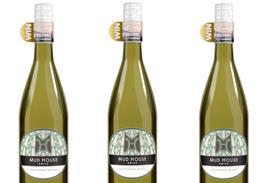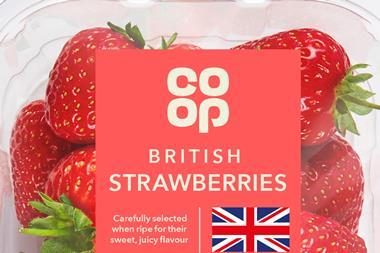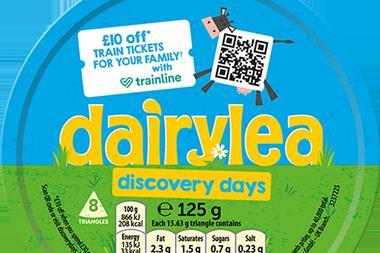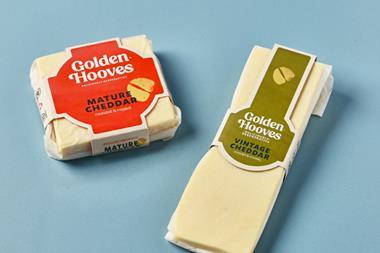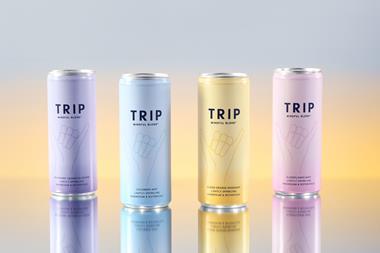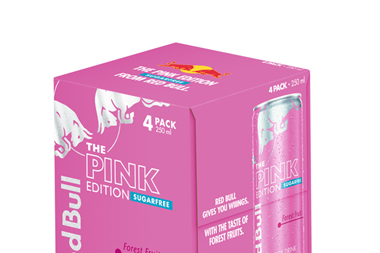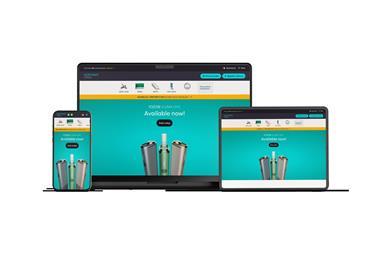C-stores aren’t big on space, but there isn’t a convenience retailer on the planet who would risk leaving out milk and bread from their offering. And while they may not be located together, these two big shopper staples are unquestionably intertwined.
Retailers’ understanding of the relationship between the two categories is essential if they are to succeed. As Kingsmill marketing controller Michael Harris explains: “Studies have shown that 30% of c-store milk shoppers plan to buy bread at the same time. Therefore, lost sales on milk could result in lost sales of bread, too.”
This makes it all the more important for retailers to be fully on the ball in terms of which products and pack sizes to stock in both bread and milk. Worryingly, many retailers are still failing to acknowledge that there is a lot more to the bread category than white sliced loaves. “Many convenience stores concentrate on standard 800g white bread, but this represents less than half of the bread sold in the market,” claims Hovis category manager Tom Gulliver. “In addition to standard white ensure you also sell healthy white, such as Hovis Best of Both, wholemeal, and seeded, as well as some smaller loaves such as the Hovis 400g range.”
Kingsmill has a similar viewpoint: “We understand the importance of the 800g Everyday White segment to c-store retailers. However, in order to achieve full value from the bakery category c-store retailers should ensure they stock a tight range of branded products,” says Harris. “We recommend supplementing this with a range of smaller loaves, such as Kingsmill Little Big Loaf, to appeal to the growing number of smaller households, and healthy products such as Kingsmill 50/50, to satisfy the growing number of shoppers seeking healthier options.”
Health is also a big factor in the purchase of milk. When it comes to the UK’s most favoured fat content, there is no arguing that semi-skimmed is most popular with a 63% share of the market, followed by whole milk with 27%, and skimmed on 6%. “Space apportioned to each variant should reflect market percentage share,” says Dairy Crest sales and marketing director for liquids Marc Dubery.
However, there’s a new kid on the block in the form of 1% milk, which appears to tick all the right health and taste boxes. While it may not have earned a big percentage share in the milk market just yet, the government is extremely excited about its potential. “1% fat milk still has the important nutritional benefits, but with half the fat of semi something that simple but beneficial has got to be worth trying,” says the Food Standards Agency’s head of nutrition, Dr Clair Baynton.
There is even the implication that 1% milk has the potential to steal semi-skimmed’s crown as consumer’s first choice of milk. “In the 1970s full-fat milk was very much the norm, but since then we have seen a decisive shift to semi-skimmed, which now outsells full-fat by quite a margin,” says Baynton. “Our research shows that people are prepared to consider switching to 1% fat milk and those who regularly use semi-skimmed like the taste as much.”
Robert Wiseman Dairies, which manufactures its own brand of 1% milk, The One, is unsurprisingly in favour of c-stores stocking up. “The increasing popularity of 1% milk sees us advising stores to dedicate more space in the chiller to The One and reduce the space offered to whole milk,” says sales and marketing director Sandy Wilkie.
Dairy Crest has also picked up on the demand for 1% milk and is about to launch a branded variant into independent convenience stores. The launch of Country Life 1% will be supported with flyers educating consumers about its fat content and health benefits.
However, the group is quick to warn retailers not to get too carried away. “1% in convenience is worth £3.8m and although growing 70.8% year on year accounts for less than a percentage share of total convenience fresh milk,” says Dubery. “It must be remembered that a convenience shopper is looking to top up on ‘must have’ items. Therefore, their biggest concern is that core ranges are in stock at all times.”
Another major trend that Country Life is capitalising on is consumer demand for locally sourced produce. “Consumers understand ‘local milk’ to be British,” claims Dubery. “Country Life milk is Red Tractor-endorsed with strong links to British farmers.”
Robert Wiseman Dairies is also getting in on the act. “We are looking at regional labels where appropriate, which demonstrates that we are aware that provenance is important to a number of our customers,” says Wilkie.
Of course, for the UK’s milk suppliers it is merely a case of communicating their British origins to consumers, but becoming fully ‘British’ is a good deal more challenging for bread manufacturers, as much of their wheat has historically been sourced from Canada.
Hovis recently announced that it would source its whole range from British wheat. “There’s a huge trend towards local provenance right now,” says Gulliver. “In fact, research from Kantar Worldpanel highlights that almost three-quarters of households would choose local if they could. We’ve spent the past five years working with farmers to grow a strain of premium wheat here in Britain, which had previously only been grown in countries such as Canada. We researched our move to 100% British wheat widely with extremely positive results. Indeed, people we spoke to were indignant that other bread brands were importing wheat from overseas.”
Hovis concedes that there are risks involved in its decision. “The strain of premium wheat that we’re growing is lower yielding than other British wheat varieties,” says Gulliver. “However, our wheat is considerably more resistant to disease and poor weather, thus much less likely to fail. We are extremely confident that this is sustainable ongoing.”
Warburtons is also set to venture into British-branded products, although at present the baker is launching only a single British loaf. Wheat for the loaf will be sourced from the company’s network of 320 farmers across the UK and will be available to retailers from April.
It is possible for retailers to synergise their milk and bread categories to ensure maximum spend? “To maximise sales, we recommend c-store retailers consider placing signage close to the milk fixture to prompt customers to pick up a loaf of bread,” says Harris.
Robert Wiseman Dairies uses this tactic to good effect by supplying retailers with branded signs. “We have milk reminders that can be used alongside bread and other fixtures,” says Wilkie.
It has also experimented with bread and milk guarantees and has worked in partnership with Warburtons and Convenience Store to promote this among a number of convenience retailers.
“The bread and milk guarantee is a promise from retailers to their customers to guarantee that they will always have a stock of bread and a stock of milk,” explains Wilkie. “This cross-promotion was accompanied by branded POS displays to be used at the chiller and in the bread aisle, as well as in other strategic locations, to remind shoppers to purchase these basket essentials.”
Dairy Crest agrees that a guarantee is a good way of working the milk and bread categories together. “In terms of merchandising, it is challenging to range bread and milk in close proximity as milk needs to be chilled and bread is ambient,” says Dubery. “However, a more effective way of synergising the categories to drive sales is by linking bread and milk with an availability initiative. A bread and milk pledge will ensure that shoppers remain loyal to your store for their top-up shopper missions and you will benefit from the additional basket spend.”
Another aspect to consider is the key purchase times for milk and bread. “Research suggests that a majority of bread sales occur between 7am and 9am,” says Harris. “To cater for this early morning demand, we recommend c-store retailers replenish their bakery fixture last thing at night, especially if their delivery takes place after 8am. This will also ensure that they’re free to focus on their fresh milk offering first thing in the morning.”
So whether it’s adding a few more varieties to your product range, or improving availability, there is always more you can do to increase your bread and milk sales. They may have been around for a long time, but there’s nothing staid about these innovative categories.
top tips
Research by Arla into the habits of convenience shoppers reveals that a milk purchase is premeditated, regardless of fixture layout. Consumers go through three levels of decision making when it comes to choosing milk, it claims: 1st decision: milk type range by fat type to facilitate how people shop the category 2nd decision: pack size give sufficient space to bigger pack sizes (1ltr and and 2ltrs) to encourage trade-up from one pint 3rd decision: brand stock top-selling brands such as Cravendale and The One
ones to watch…
On yer bike Hovis is hoping to encourage children to get on their bikes and eat more healthily as it partners up with Olympic champion cyclist Victoria Pendleton. She will be working with the company over the next three years; her first campaign will be the Hovis Wholemeal Challenge in April. tel: 01727 815850 Get reacquainted Lactofree’s 2010 campaign focuses on mending broken relationships with dairy. ‘Dump the lactose, not the dairy’ aims to convince lactose-intolerant consumers that they can enjoy real dairy again with Lactofree. The campaign will feature TV adverts as well as national and consumer press. tel: 0845 762 6434 Coconut creation Kara Dairy Free, the UK’s first coconut-based non-dairy milk, is now available for c-stores to order. This freshly pressed coconut milk, enriched with calcium, has the same characteristics as semi-skimmed milk in taste, texture and colour. It is ambient, contains just 2% fat and is lactose free. rrp: £1.29 tel: 01564 731 980 Cat’s whiskers Warburtons is showing its wild side with the launch of 600g Tiger White and Tiger Brown loaves. It claims they have all the flavour, aroma, softness and crustiness of just-baked bread, but the shelf life of wrapped sliced bread. It hopes the range will benefit from the popularity of in-store bakery products. rrp: £1.19 tel: 0800 243 684 The power of one Country Life is the latest milk brand to enter the 1% fat market. The milk will be launched into independent convenience retailers as well as foodservice and doorstep deliveries. Its introduction will be supported with flyers educating consumers about the fat content and health benefits of 1% milk. tel: 0845 122 6455
retailer opinion
“The 2ltr semi-skimmed milk is our best seller. We stock 1% milk, too we don’t do huge volumes of it, but it sells well enough. In our store it tends to be older people who buy it, maybe because they are health conscious and it’s lower in cholesterol. “Within bread 800g is definitely our most popular size, but we do stock Kingsmill’s Little Big Loaf. I think the smaller sized loaves appeal to single people and the elderly. We’d probably sell a lot more if our 800g breads weren’t on promotion.” Aidan McIvor, Spar Greystone, Coleraine
top tips
l Position extra signage at the entrance and by the tills to make the bakery fixture easy for shoppers to find. Research shows that 10% of shoppers who fail to buy their loaf say it is because they can’t find it l Bakery should be in a prominent location, such as at the front of the store or near the milk chillers l Stock impulse lines on the way into and out of the bakery fixture to help maximise incremental sales l Use new products to add variety and encourage impulse purchase l Stock a variety of bakery occasions products such as muffins and crumpets to encourage impulse purchases Source: Warburtons
top tips
l Availability must be 100%, particularly when customer demand is highest. Availability is the number one shopper requirement that a convenience store must deliver. Milk must never be out of stock l Freshness a fully stocked chiller gives the shopper the impression that the milk is fresh. Marking down out-of-date stock leads shoppers to believe that remaining stock is not as fresh as it could be. Clear to waste instead l Cleanliness keep your chiller spotless. It’s the hygiene benchmark for your store l Rotation always rotate date codes and pull your oldest stock forward l Help customers shop keep range, segmentation and fixture simple l Visibility ensure your milk offering is clearly visible from the front of your store. Source: Dairy Crest






